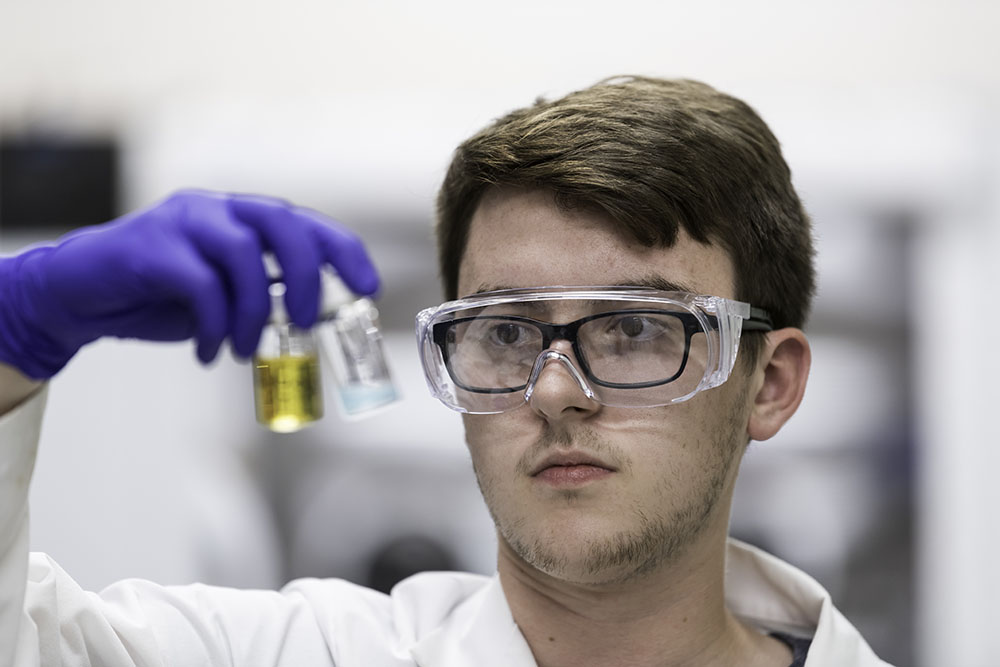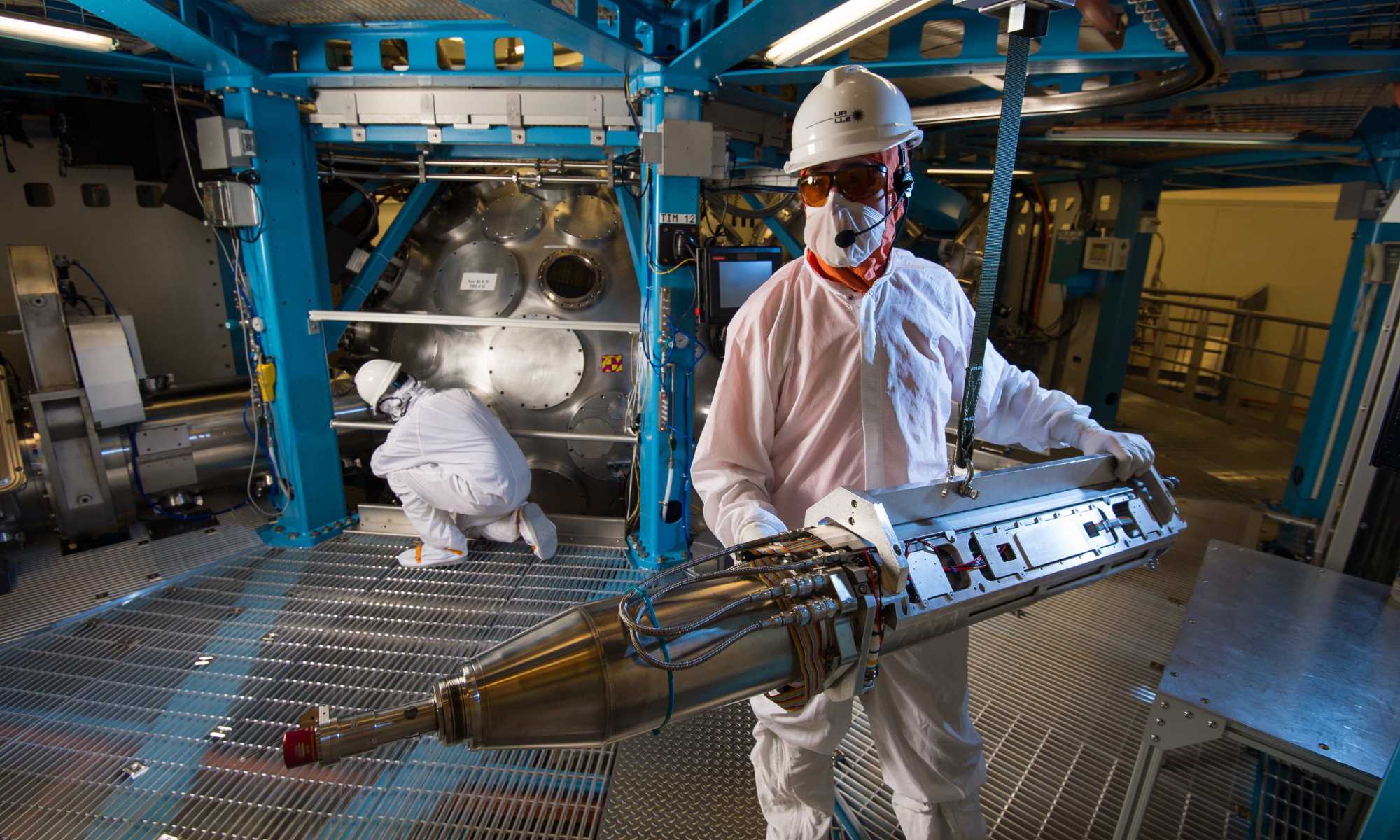The University—the only New York State institution to receive this NSF grant funding—joins the Northeast University Semiconductor Network.
The National Science Foundation (NSF), in partnership with Semiconductor Research Corporation (SRC), has named the University of Rochester as one of six new grant-supported Research Experiences for Undergraduates (REU) sites to provide undergraduate students with hands-on research opportunities in STEM priority areas related to semiconductors. The University is the only New York State institution to receive this grant, which will bolster research and development and help build the workforce in semiconductors and microelectronics in New York State and throughout the country.
The grants are the first under a five-year agreement, announced in January 2022, between NSF and SRC to jointly support awards through the REU program. The six new REU sites will provide eight to 10 weeks of research and professional development activities during the summer for about 10 students. Rochester’s REU site is focused on nanophotonics, quantum photonics, and vision/biomedical optics.
“I am grateful to the National Science Foundation, Semiconductor Research Corporation, and our elected officials for making this REU opportunity possible,” says University President Sarah Mangelsdorf. “The University of Rochester is focused on growing our research enterprise in areas of historical strength and distinction, and optics and photonics are certainly areas where we excel in discovery and innovation. As a research-intensive university, we place a high value on providing our undergraduate students with meaningful research experiences. With this award, we’re uniquely positioned to play a major role in building and innovating a next-generation semiconductor ecosystem, including producing the future engineers who will lead it.”

Charles E. Schumer, US Senate Majority Leader and senior senator from New York, says: “From championing the CHIPS and Science Act to my ongoing support of the National Science Foundation, I have made it my priority to bolster US semiconductor research and manufacturing, especially in Upstate New York. I want to congratulate the University on receiving this award and ensuring that the next generation of workers are given hands-on research experiences right here in Rochester. From Micron to Edwards Vacuum, companies are choosing Upstate New York to be the center of our nation’s semiconductor industry, and with programs like these, the University of Rochester will be a vital part of our region’s research and talent pipeline for years to come.”
US Representative Joe Morelle also praised the University for its leadership in next-generation technologies. “For generations, Rochester has been synonymous with technology, knowledge, and entrepreneurship, and now with this grant, we are investing in what makes our community special—our people,” Morelle says. “By advancing our local semiconductor industry, we’re strengthening our workforce and economy, while also bolstering our supply chain and global competitiveness. I’m grateful to the National Science Foundation for recognizing the University of Rochester’s potential to be a leader in this rapidly developing field and look forward to the future.”
Nanophotonics, quantum photonics, and vision/biomedical optics
“We are excited to bring talented and diverse groups of undergraduate students from across the country here to research and attempt to solve some of the greatest challenges of the future,” says Wendi Heinzelman, dean of the Hajim School of Engineering & Applied Sciences. “This REU will provide emerging scholars and researchers formative, hands-on learning opportunities at the forefront of nanophotonics, quantum photonics, and optics.”
“Building the US workforce in semiconductors and microelectronics is a national priority where NSF has a critical role,” says NSF Assistant Director for Engineering Susan Margulies. “We are excited to engage a diverse set of students in semiconductor research through this partnership with SRC, which will help and enable future advances and US competitiveness.”
The six new REU sites are:
- Nanophotonics, Quantum Photonics, and Vision/Biomedical Optics, University of Rochester
- Chemistry Pathways to Building Functional Materials, University of Texas at Dallas
- Materials for Future Computing, Carnegie Mellon University
- Novel Techniques and Applications in Catalysis Research Development and Molecular Dynamics, University of Pennsylvania
- Semiconductor Electronics and Photonics, University of Dayton
- Semiconductor Hands-On Research Experience, University of Michigan
Rochester’s REU program will engage participating students in the frontiers of photonics research in nanoscience, bioscience, and quantum science while at the same time providing them with experiences to recognize the excellent career opportunities, both academic and industry-based, available in photonics.
Andrew Berger, professor of optics and bioengineering, and Nick Vamivakas, professor of quantum optics and quantum physics—both of the Institute of Optics in the Hajim School—are the principal investigator and coprincipal investigator respectively of the REU, which will enhance US capabilities by training top students from across the country to become key contributors in the commercial photonics sector, leaders on the frontiers of fundamental photonic science and engineering, and the best educators in colleges and universities. Additionally, this REU will increase diversity in graduate-level photonics research and the workplace by prioritizing members of underrepresented groups, community college students, and students from institutions lacking large STEM research programs, all via pipelines already connected to the University and the Institute of Optics. The University’s David T. Kearns Center will provide professional development to students, as well as social programing and other supports.
Since 1987, the REU program has supported students to conduct intensive, authentic research in any STEM area normally funded by NSF. Approximately 6,000 college and university students participate in REU sites every year, mentored by faculty members and other senior researchers. New REU sites are established based on NSF’s review of proposals submitted to an annual competition. SRC, a high technology-based consortium, serves as a crossroads of collaboration between technology companies, academia, government agencies, and SRC’s highly regarded engineers and scientists. Through its interdisciplinary research programs, SRC plays an indispensable role in addressing global challenges, using research and development strategies, and advanced tools and technologies.
Rochester joins Northeast University Semiconductor Network
The University also recently joined 20 other higher education institutions in forming the Northeast University Semiconductor Network. The network aims to spark the industry’s workforce growth in preparation for the four semiconductor manufacturing plants Micron Technology, Inc. plans to build in nearby Syracuse. At an April 10 press conference in Syracuse, Schumer and NSF Director Sethuraman Panchanathan joined Micron executives and President Mangelsdorf as they revealed the new network, which includes 21 founding member institutions across the northeast, including nearby institutions Rochester Institute of Technology, Cornell University, and Syracuse University.
The semiconductor consortium fostered by Micron and NSF aims to enhance curriculum by increasing technical training, experiential learning programs, and research opportunities for students. Micron, in partnership with the network institutions, will champion efforts to modernize and enhance curriculum by sharing industry-backed technical content, expanding experiential learning programs for greater access to cleanrooms and teaching labs, and bolstering research opportunities for students. The network will also work to reach more underrepresented students who attend the participating universities, according to Micron’s news release. Micron plans to begin construction on the Syracuse-area semiconductor plant in 2024, with operations slated to begin by 2030.
The investments and partnerships align with Schumer’s long-standing effort to bring technology jobs to the state via the August CHIPS and Science Act, which designated $200 billion for semiconductor workforce training. Recently, President Mangelsdorf and Dean Heinzelman joined with women presidents and deans from six of America’s leading research universities in signing an open letter in support of CHIPS and Science Act. In the letter, the group calls on higher education to help meet Commerce Secretary Gina Raimondo’s semiconductor workforce goals by preparing more women and people of color to enter the field. The letter details steps higher education institutions must take to support the legislation’s ambitious goals to grow and diversify the semiconductor industry workforce.





